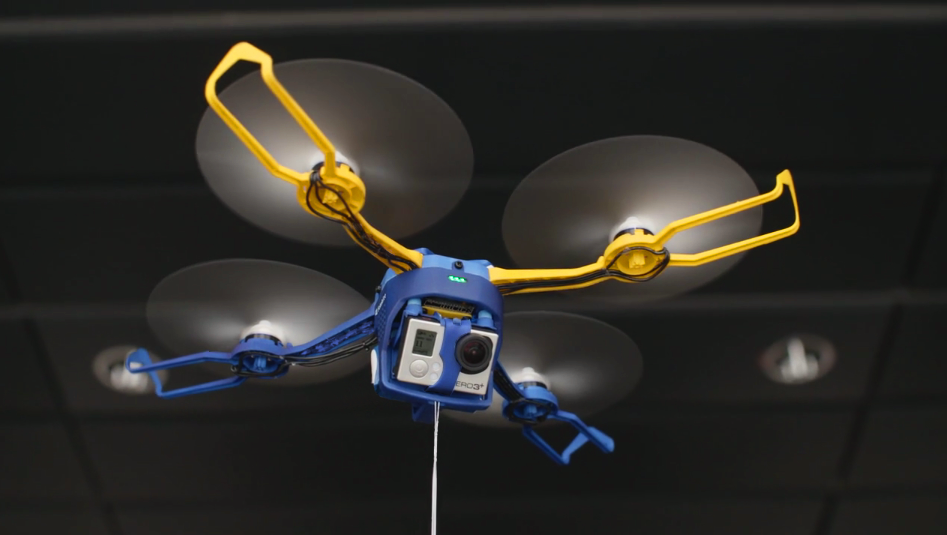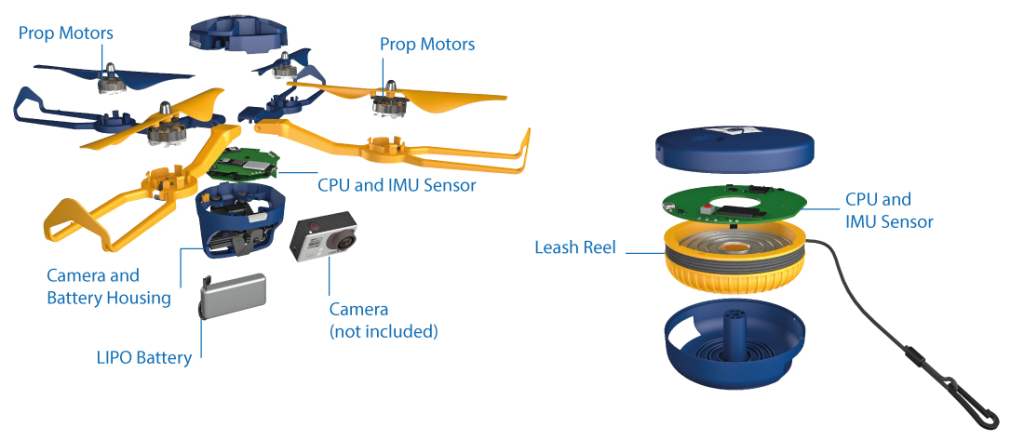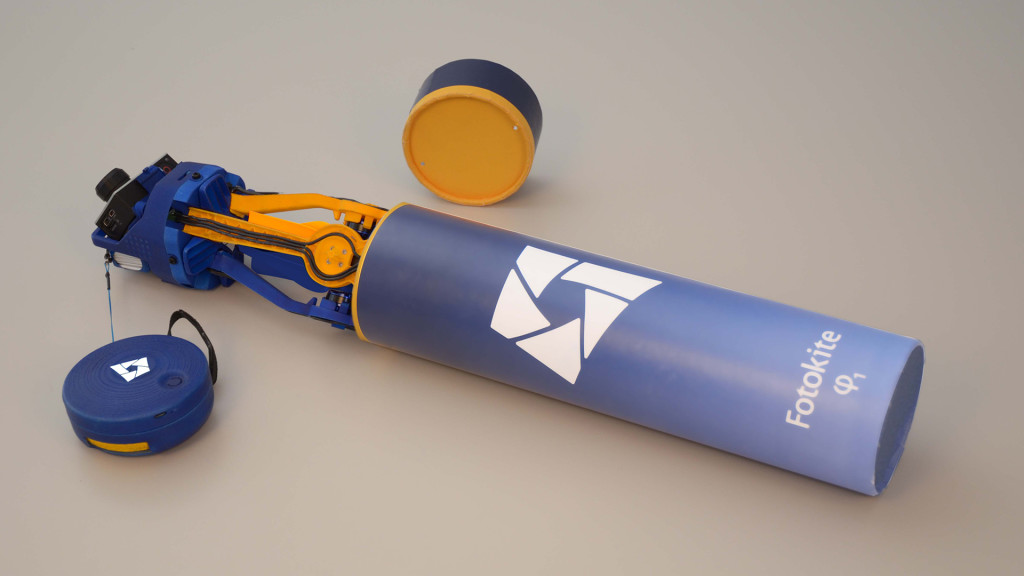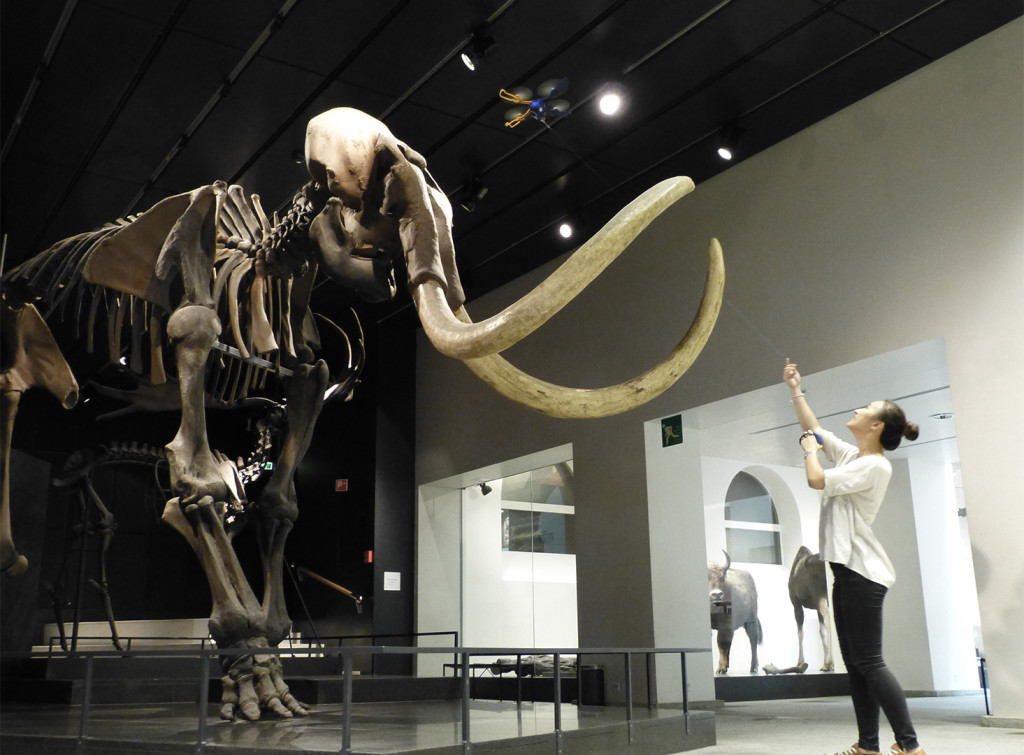
Robohub.org
Fotokite Phi GoPro-carrying quadcopter: Friendly, compact, light and affordable

Flying Fotokite close up
Zurich-based robotics company Perspective Robotics this week unveils Fotokite Phi, their first consumer targeted, affordable, accessible, tethered flying camera. The Fotokite Phi is available now for pre-order on Indiegogo for $349 USD.
https://www.youtube.com/watch?v=aglTWdI-4Bo
The story behind Fotokite
Inspired by drone operators during the Russian protests in 2011, Perspective Robotics’ CEO Sergei Lupashin set out to make a drone that is safe and easy to use. The result is the Fotokite, a tethered user-friendly quadcopter, with a unique take on safety for both the operator and the people nearby. The Fotokite Phi is based on the same technology that Lupashin demo’ed on the TED stage in 2014, and that is also currently being used by major news outlets, such as the BBC, for their broadcast coverage and special programming.

Key benefits include:
Instant launch, intuitive gesture control
Fotokite is the only drone on the market that doesn’t rely on remote piloting or GPS, making for a simpler, more intuitive, user experience. To launch the Fotokite Phi, the user simply points it in the direction they want it to go and gives the device a quick shake. The onboard GoPro is powered by the Phi and automatically turns on when flying. The Fotokite’s core algorithms – developed by Lupashin while he worked on his PhD at the Flying Machine Arena at ETH Zurich, Switzerland – are protected by a patent application and enable the device to fly itself, controlled by simple gestures, on the end of the tether, with no need for a remote control or GPS.
Foldable and portable
The Fotokite Phi easily fits into a backpack or suitcase. It weighs 12 ounces, including the GoPro 3/3+/4 camera and battery, and is the lightest GoPro-carrying quadcopter on the market. The Fotokite Phi folds into a compact carrying case (about the size of a two liter soda bottle) and can easily fit in a backpack or suitcase for people traveling with it. The Fotokite Phi comes with a 26 foot leash included and a removable battery that charges directly through a USB port.
Safer for users and the people around them
If the Fotokite Phi detaches from the tether, the device is programmed to detect a lack of tension and float slowly to the ground, instead of flying away. In addition, the Fotokite’s soft propellers are safe to the touch.

Fotokite Phi folded, half in its tube
Accountability
The tether makes it clear to bystanders who’s controlling the device, allowing for accountable aerial photography. To this end, Fotokite has secured special exemptions in Switzerland and France to be flown near crowds. Fotokite is currently working towards acquiring the same permission from the FAA in the US.

Fotokite at a museum
| Flight Unit |
| Propellers : Soft Plastic 6,5 inch Fotokite Prop |
| Weight : 300g (excluding GoPro Camera), 350g (including GoPro camera) |
| Battery : Li Po Battery (1000 Ah, 11.1Wh), 3 cells |
| Flight time : We are aiming for 15 minutes |
| Camera : Go Pro 3 / 3+ / 4 |
| Charger : USB 3C Charging cable |
| Dimensions : 90mm height, 350mm diameter, 170mm rotor diameter |
| CPU : ARM Cortex™ Processor |
| Sensors : IMU, no GPS |
| Motors : 1400 Kv Brushless |
| Smart-Leash |
| 8m cord, self retracting |
| Dimensions : 40mm height, 90mm diameter |
| Sensors : IMU |
| Case |
| Dimensions : 90mm x 300mm |
| Weight : 150g |
tags: c-Aerial, crowdfunding, cx-Consumer-Household, Drone, ETH Zurich, Fotokite, Indiegogo, Mapping-Surveillance, quadcopter




